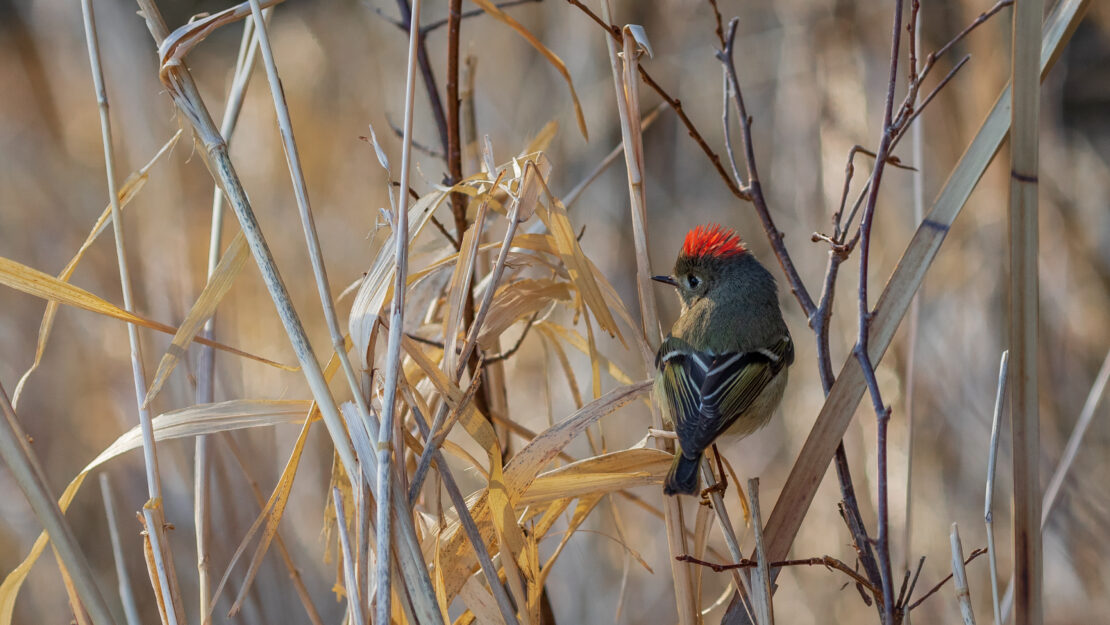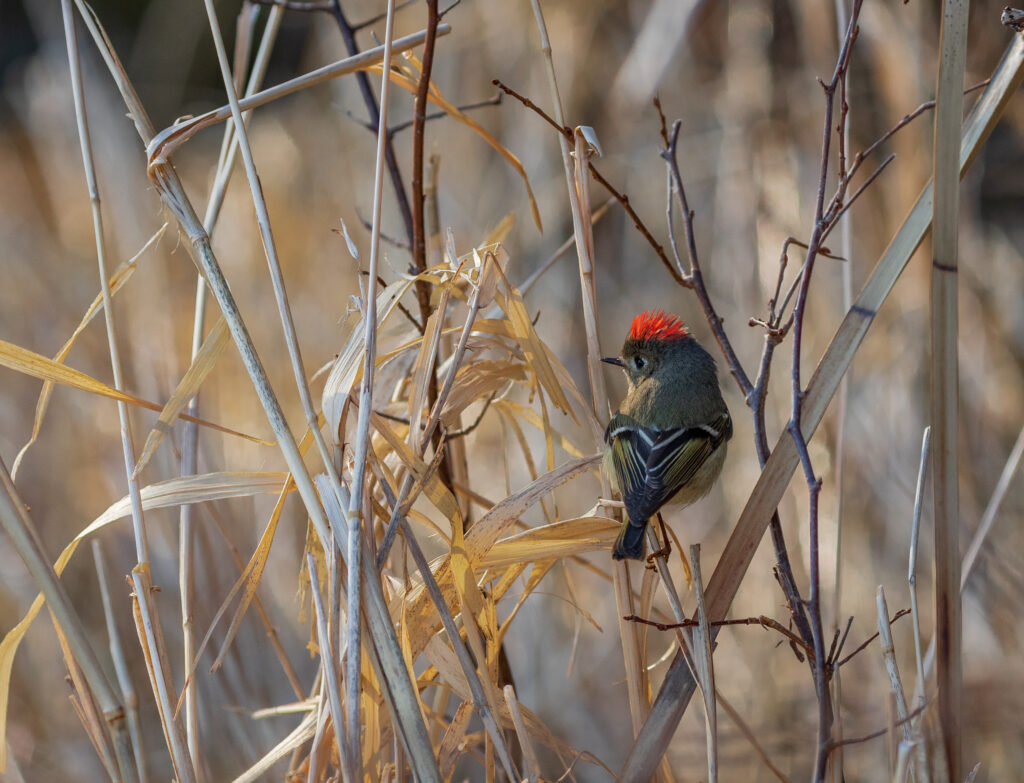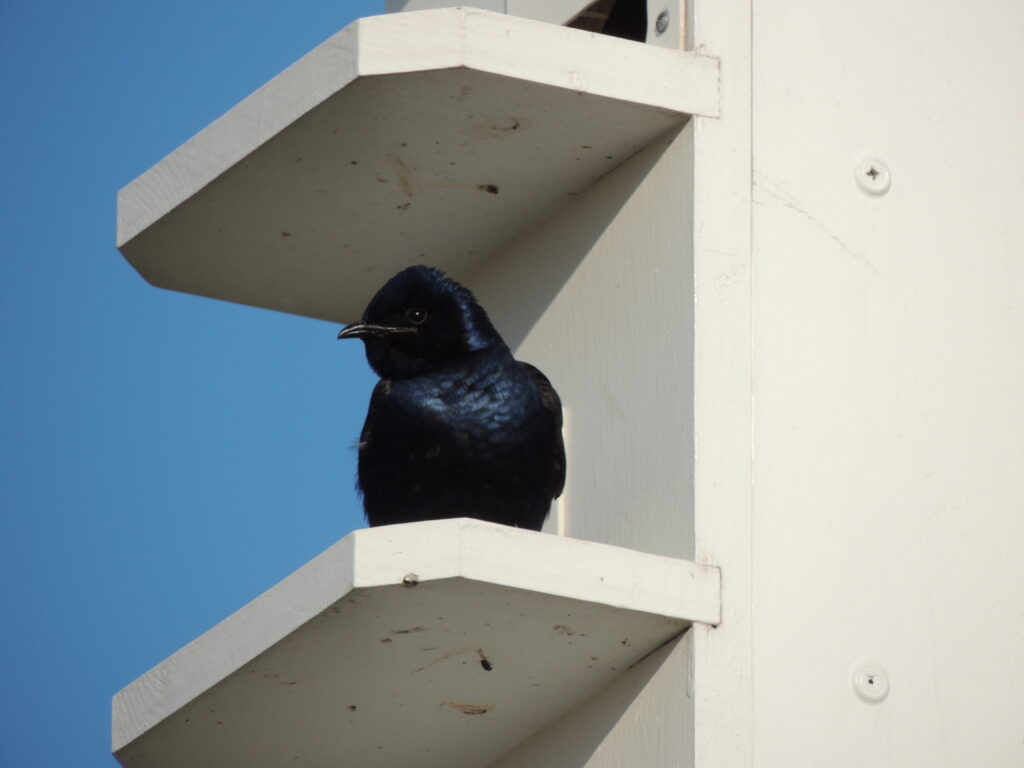The Spring Songbird Migration!

By Kate Carnahan, Outdoor Recreation Specialist Individual Placement / AmeriCorps Member placed at Minnesota Department of Natural Resources, Division of Parks and Trails
As the days start to become longer and warmer, Minnesotan wildlife begins to wake up for the year. And as some people leave Minnesota for their Spring Break, for birds it’s actually a destination for migration. This can be seen by the thousands of V-shaped geese formations taking up our sky as birds return for spring. I myself have seen the eagles by my apartment fishing more frequently in my nearby lake. The calls of Sandhill Cranes and Trumpeter Swans have marked the start of the season, declaring their arrival to anyone listening. Due to the earlier spring this year, an exceptional amount of waterfowl migrated back into the state, making April a great time to keep an eye out for shorebirds as well.
Moving into April from March, we will start to see the arrival of waterfowl, large land birds, shorebirds, and the early migrant songbirds like the Purple Martin, Ruby-Crowned Kinglet, and Yellow-rumped Warbler. These beautiful songbirds are key species in our ecosystems by controlling pests, pollinating plants, and seed dispersal.
RUBY-CROWNED KINGLETS

The Ruby-crowned Kinglets are most commonly identified by the splash of bright red that adult males have on top of their head, emphasizing the name “ruby-crowned”. The males are even able to raise their otherwise flat crown when threatened or excited in a flash of colors! In addition to this, they have a white eye ring, plain face, an overall olive-green color, and black bar below the wingbar (the strip going across the wings). If seen outside, they can be described as acrobatic birds that move quickly through foliage, constantly flicking their wings as they move. You might be able to find Ruby-crowned Kinglets during migration in shrubby habitats, deciduous forests, parks, and suburbs before they head to tall, conifer forests for the summer months. Although they may be small, Ruby-crowned Kinglets can produce an incredibly loud, jumbled song.
YELLOW-RUMPED WARBLER

This grey and yellow bird can also be identified by its name, much like the Ruby-crowned Kinglet. The bright yellow markings on its “rump”, sides of chest, and throat in combination with its dark cheek patch help us identify this well-known warbler. Typically migrating earlier in the spring, this songbird can be found in lower Minnesota as it makes its way up north to conifer forests for breeding. Perhaps one of the most versatile foragers of the warblers, this species is the only warbler to be able to digest the waxes in berries, allowing them to travel further north than other warblers while still snacking on insects in the summer. A sharp, undulating chek! Can be heard from this species of warbler.
PURPLE MARTIN

These beautiful iridescent, dark blue-purple birds will start making their migration into northern states later this month to reach their breeding sites. Males can often appear almost black with their overall dark coloring, while females show a mix of grey, blue and white– both stunning. They can often be found by lakes and ponds, but through efforts by communities to build nesting boxes for them, they can commonly be found in more urban areas. These nest undertakings have been to combat against the invasive European Starlings that often kick Purple Martins out of their own nests and injure or kill their eggs. Purple Martins can be seen soaring and gliding through the sky—rarely landing on the ground— while on the hunt for insects or skimming water from ponds. Their call can be identified by boisterous, throaty chirps and creaky rattles.
To celebrate National Wildlife Week (4/01-4/07), keep an eye out for these amazing birds in your local ecosystem!
Sources:
Online bird guide, bird ID help, life history, bird sounds from Cornell All About Birds